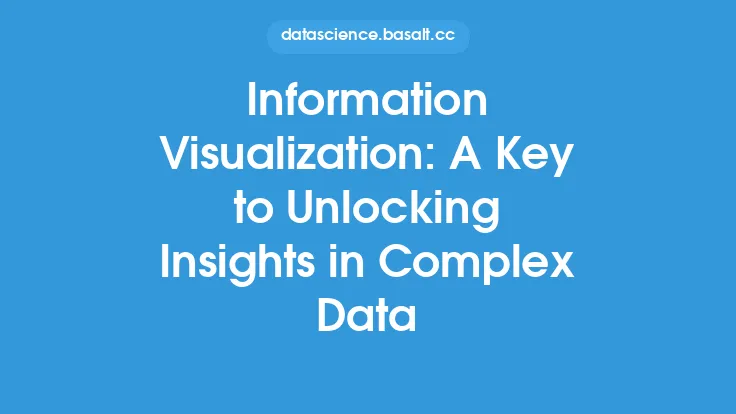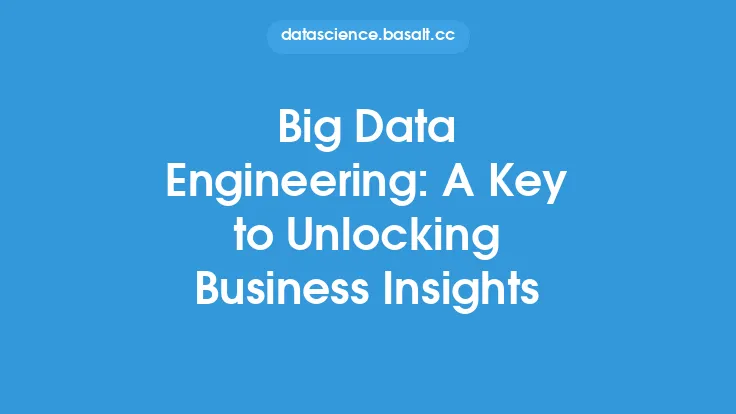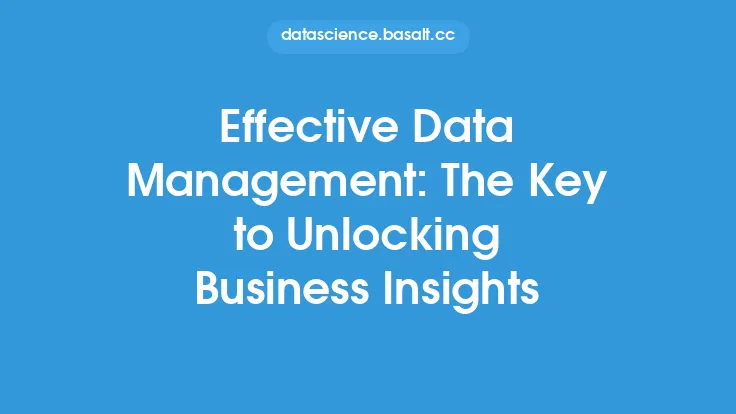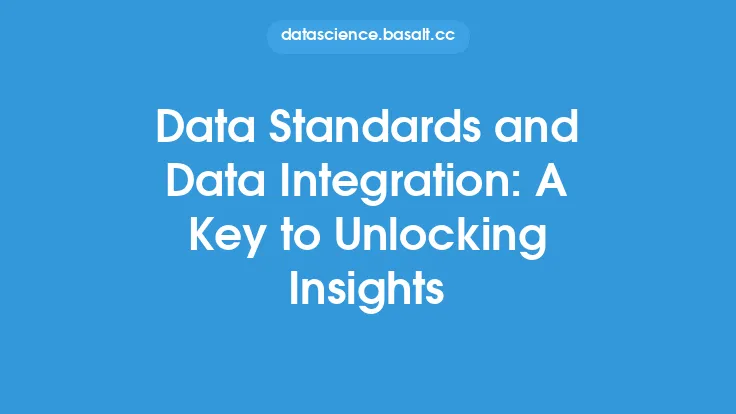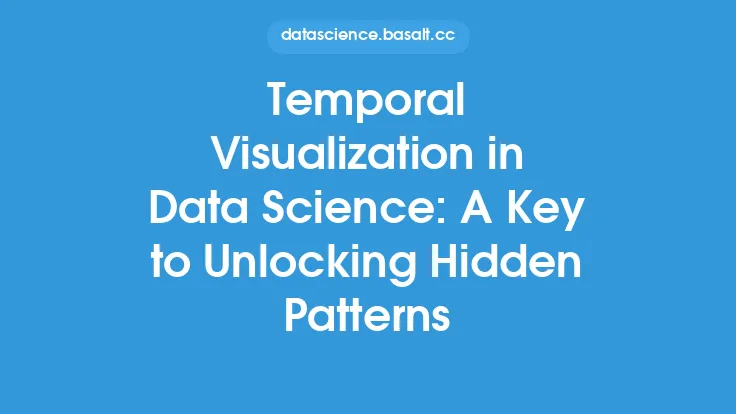Data lineage is a critical aspect of data quality that involves tracking the origin, movement, and transformation of data throughout its entire lifecycle. It provides a detailed record of all the processes, systems, and people that have interacted with the data, allowing organizations to understand the data's provenance, quality, and reliability. In essence, data lineage is the ability to reconstruct the data's history, from its creation to its current state, and to identify any changes, modifications, or errors that may have occurred along the way.
What is Data Lineage?
Data lineage is a metadata management concept that involves collecting, storing, and analyzing metadata about the data, such as its source, processing, and transformation history. This metadata can include information about the data's creation, modification, and deletion, as well as any changes to its structure, format, or content. By tracking this metadata, organizations can gain a deeper understanding of their data's quality, accuracy, and reliability, and can identify potential issues or errors that may have occurred during the data's lifecycle.
Benefits of Data Lineage
The benefits of data lineage are numerous and significant. By implementing a data lineage system, organizations can improve the quality and reliability of their data, reduce errors and inconsistencies, and increase transparency and trust in their data. Data lineage can also help organizations to comply with regulatory requirements, such as data privacy and data protection laws, by providing a clear and auditable record of the data's history. Additionally, data lineage can help organizations to optimize their data processing and analytics workflows, by identifying bottlenecks, inefficiencies, and areas for improvement.
Components of Data Lineage
A data lineage system typically consists of several key components, including data sources, data processing systems, data storage systems, and data analytics tools. These components work together to collect, process, and analyze the metadata about the data, and to provide a comprehensive view of the data's history and provenance. The components of a data lineage system may include:
- Data sources: These are the systems, applications, or devices that generate or collect the data, such as databases, files, or sensors.
- Data processing systems: These are the systems, applications, or tools that process, transform, or manipulate the data, such as ETL (Extract, Transform, Load) tools, data integration platforms, or data analytics software.
- Data storage systems: These are the systems, applications, or devices that store the data, such as databases, data warehouses, or file systems.
- Data analytics tools: These are the systems, applications, or tools that analyze and visualize the data, such as business intelligence software, data science platforms, or data visualization tools.
Data Lineage Techniques
There are several techniques that can be used to implement data lineage, including:
- Manual tracking: This involves manually recording the metadata about the data, using tools such as spreadsheets or documents.
- Automated tracking: This involves using automated tools and systems to collect and store the metadata about the data, such as data lineage software or metadata management platforms.
- Data warehousing: This involves storing the data in a centralized repository, such as a data warehouse, and using data warehousing tools to track and analyze the data's history and provenance.
- Data virtualization: This involves creating a virtualized layer of metadata that provides a unified view of the data's history and provenance, without requiring physical storage or movement of the data.
Data Lineage Tools and Technologies
There are several tools and technologies that can be used to implement data lineage, including:
- Data lineage software: This is specialized software that is designed to collect, store, and analyze metadata about the data, such as data lineage platforms or metadata management tools.
- Data integration platforms: These are platforms that integrate data from multiple sources, and provide tools and features for tracking and analyzing the data's history and provenance.
- Data analytics software: This is software that analyzes and visualizes the data, and provides tools and features for tracking and analyzing the data's history and provenance.
- Cloud-based services: These are cloud-based services that provide data lineage capabilities, such as cloud-based data warehousing or cloud-based data integration platforms.
Challenges and Limitations of Data Lineage
While data lineage is a critical aspect of data quality, there are several challenges and limitations that organizations may face when implementing a data lineage system. These may include:
- Complexity: Data lineage can be complex and difficult to implement, especially in large and distributed systems.
- Scalability: Data lineage systems may need to handle large volumes of data and metadata, which can be challenging to scale.
- Data quality: Data lineage is only as good as the quality of the data itself, so organizations need to ensure that their data is accurate, complete, and consistent.
- Security: Data lineage systems may need to handle sensitive or confidential data, which requires robust security measures to protect the data and prevent unauthorized access.
Best Practices for Data Lineage
To implement a successful data lineage system, organizations should follow several best practices, including:
- Define clear goals and objectives: Organizations should clearly define what they want to achieve with their data lineage system, and what benefits they expect to gain.
- Identify key data sources and systems: Organizations should identify the key data sources and systems that will be included in the data lineage system, and ensure that they are properly integrated and connected.
- Implement automated tracking: Organizations should implement automated tracking and collection of metadata, to reduce errors and inconsistencies and improve efficiency.
- Provide training and support: Organizations should provide training and support to users and stakeholders, to ensure that they understand how to use the data lineage system and how to interpret the results.
- Continuously monitor and evaluate: Organizations should continuously monitor and evaluate the data lineage system, to ensure that it is meeting its goals and objectives, and to identify areas for improvement.
